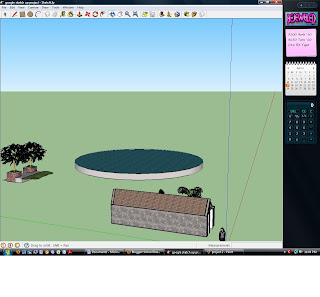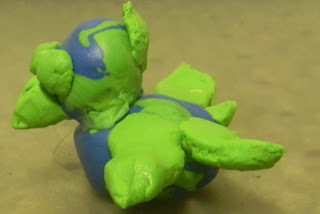Squashed Art
Third grade Lesson Plan
Tara Peterson
Art 3700
Objectives
· Students will recognize colors on a color wheel. (C)
· Students will mix primary colors to make secondary colors. (C)
· Students will talk about how different colors make you feel (C,A)
· Students will recognize lines of symmetry in their environment and in art. (C, P)
| |
| Standards Addressed · Identify and name colors in a simplified color wheel showing only primary and secondary colors. (Identify Experience) · Mix primary colors to make secondary colors. · Experience color mixing variations by placing colors on one half of paper, folding it in half to create a mirror image · Compare and contrast old master’s use of color. Discuss how color impacts the emotional feel of the painting (aesthetics). · |
Materials
Red, yellow, and blue paint
White and black cardstock
Paint aprons
Paint cups
Vocabulary
Line of symmetry: A line of symmetry divides a figure into to halves that are the mirror images of each other.
Pedagogy
1. Have each child put on a paint apron, and set up art stations at the front of the room with the paint cups. Pass out three paint cups to each table. Pass out a piece of white cardstock and a piece of black cardstock. Next, take out your examples of pictures with lines of symmetry. Explain that a line of symmetry divides something into halves that are mirror images of each other. Draw a square on the board, and draw a line down the middle. Ask the kids if the square is symmetrical or non-symmetrical. Draw a few more shapes on the board, and do the same thing. Next, draw a design on the board that is not a shape. Draw a line of symmetry on the board, and ask the kids if it is symmetrical.
2. Fold the paper in half, creating a line of symmetry. The students will dribble red, blue, and yellow paint over their papers. Make sure you remind them not to put too much paint on their papers, otherwise it will soak through. Next, the kids will “squash” the two halves of their papers together, and will un-do the paper, showing their symmetrical “squashed art.” They will do this on both the black and the white paper. Next, we will have a discussion about the different colors, and how they make us feel.
3. Allow the artwork to dry, and then hang the artwork on the wall to display it.
Teacher Resources
I will need student examples to show the students. I will also need some posters showing lines of symmetry, and color emotion posters.
Assessment
I will walk around the classroom, and will make sure they use each of the primary colors to make their squashed art. They will participate in the class discussion about color and emotions.
Accommodations/ Adaptations
This lesson is an integrated Math lesson on symmetry. You could accommodate students in your classroom with disabilities by folding the paper in half for them, and by using cups with large spouts and large handles to making pouring the paint easier for them.




























